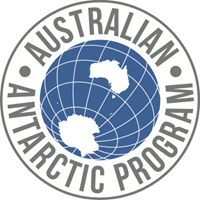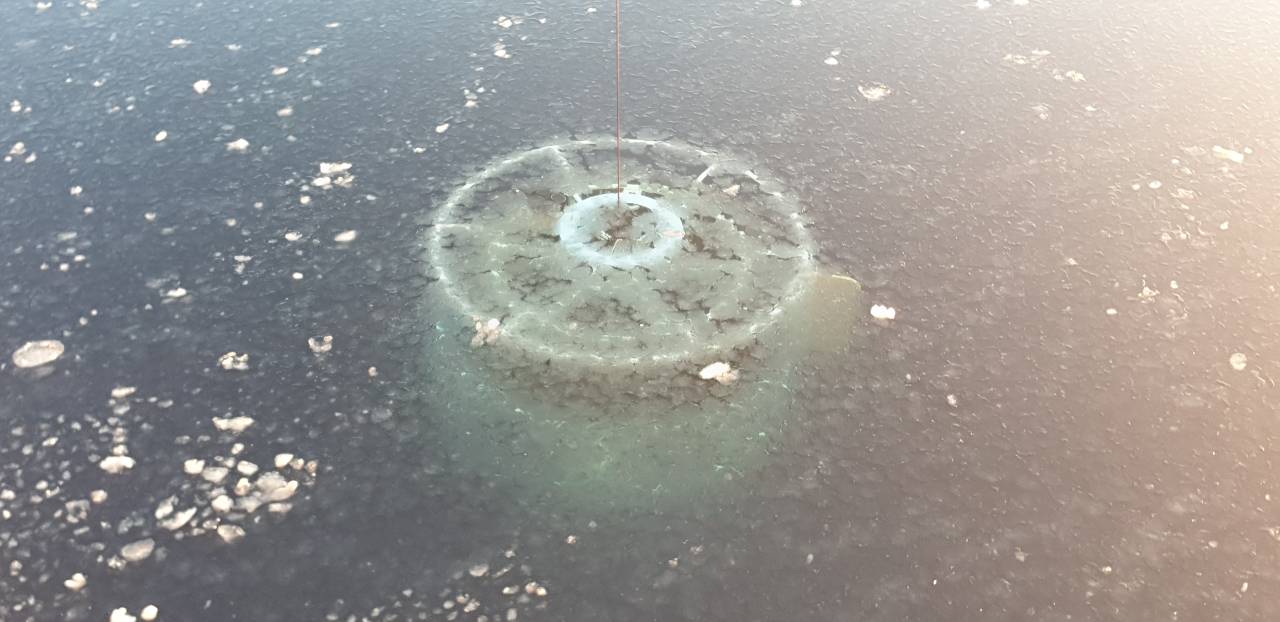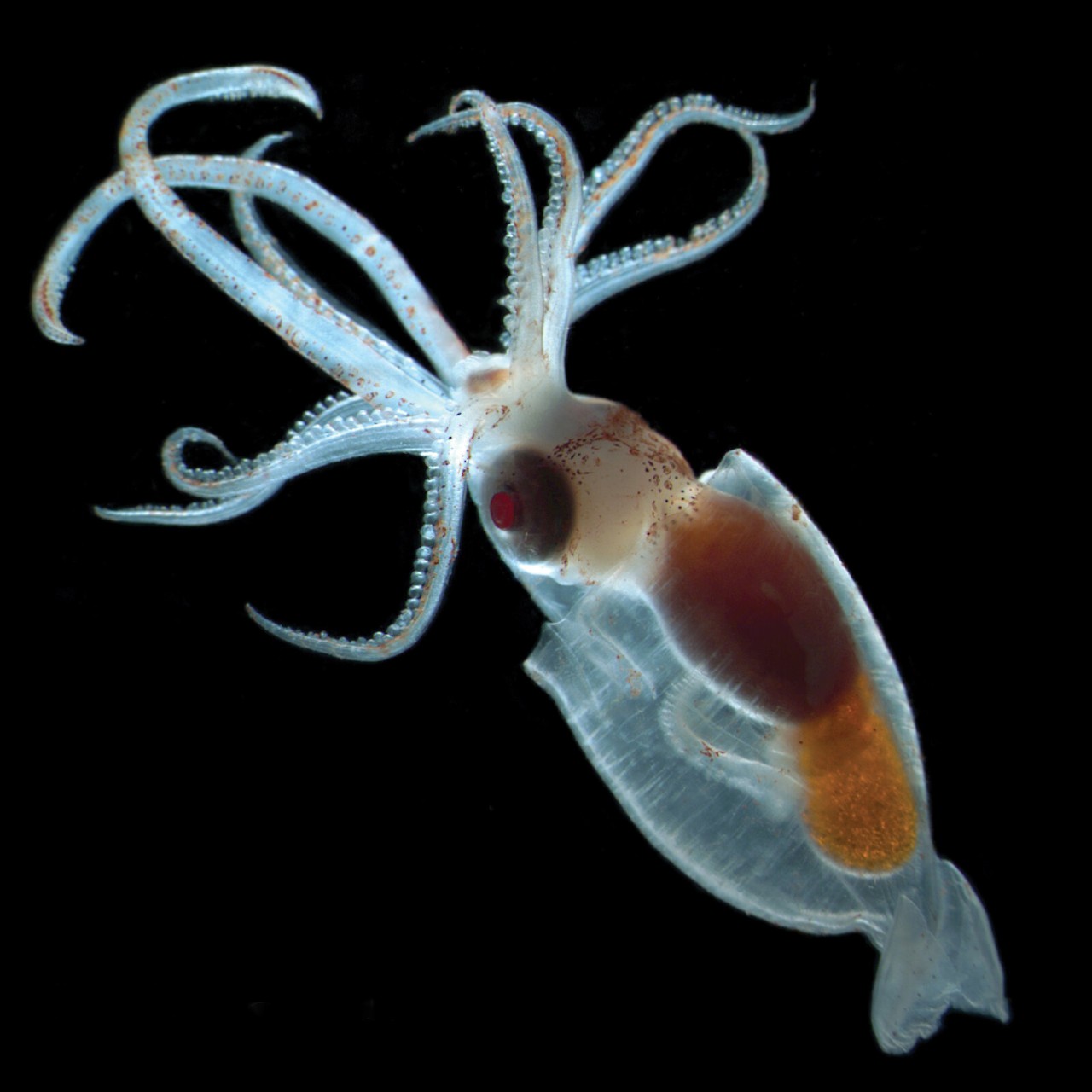
Why is the Southern Ocean important?
The current environment of the Southern Ocean has existed for over 15 million years.
Many animals rely its nutrient-rich waters for survival. When sea ice melts, the cold water sinks. This displaces and pushes up deep water, creating upwellings that carry nutrients to the surface. The nutrients feed high numbers of tiny marine plants known as phytoplankton, which form the base of a diverse marine food web. Antarctic krill feed on phytoplankton, and almost all Southern Ocean predators eat krill.
The Southern Ocean is also one of the largest carbon sinks on the planet. However, we are now producing more than it can hold. Too much carbon dioxide in the water makes it acidic, which is bad for biodiversity. Too much carbon dioxide in the air contributes to warmer temperatures that speed ice melt, reducing habitats, changing wind patterns and currents, and raising sea levels.
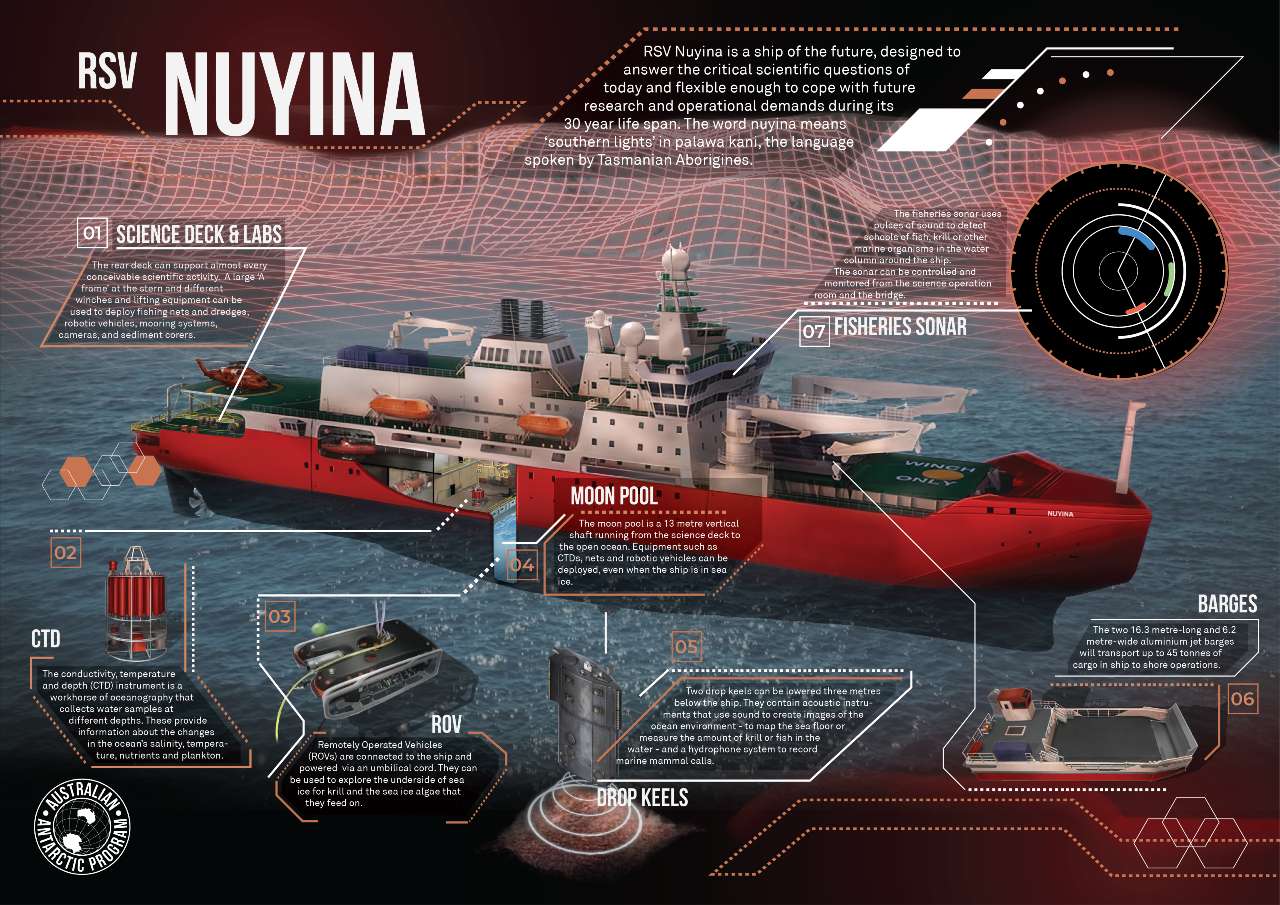
How will Nuyina help Australia to care for the Southern Ocean?
Nuyina’s science deck includes cooled aquariums for krill, freezer storage for ice cores and other samples and an array of specially designed containers for flexible laboratory space. Autonomous and tethered robots, nets, dredges, cameras, corers and grabbers record and collect specimens, rocks, seawater and sediments.
Videos, images and samples help researchers understand how the ocean works, its biodiversity and geology as well as past, present and future predicted climate. Seafloor imaging creates detailed navigation charts and maps to understand the geological and glaciological history of an area.
Atmospheric research looks at the interactions between the atmosphere, ice and ocean, to understand large-scale patterns of climate variation. The data are also important for day-to-day ship operations, weather and shipping forecasts. Airborne remote sensing or boom-mounted sensors map sea ice and pack ice to assess the extent of ice growth or melt. The Australian Antarctic Program also collect fisheries data to help set sustainable catch limits for the region.
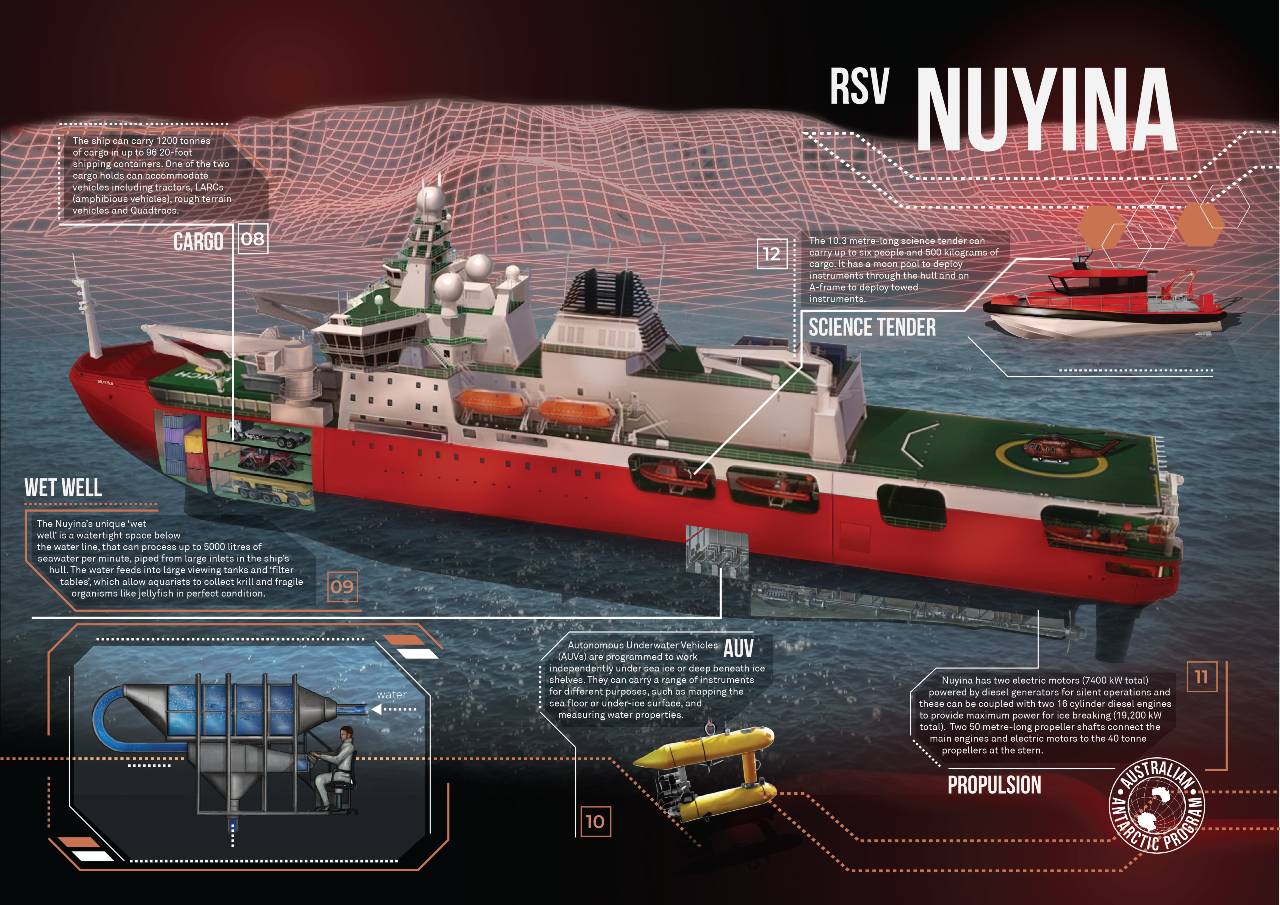
Created in collaboration with and sponsored by the Australian Antarctic Division to mark the arrival of new Australian icebreaker RSV Nuyina.
For more information visit the Australian Antarctic Division's dedicated webpage on RSV Nuyina.
